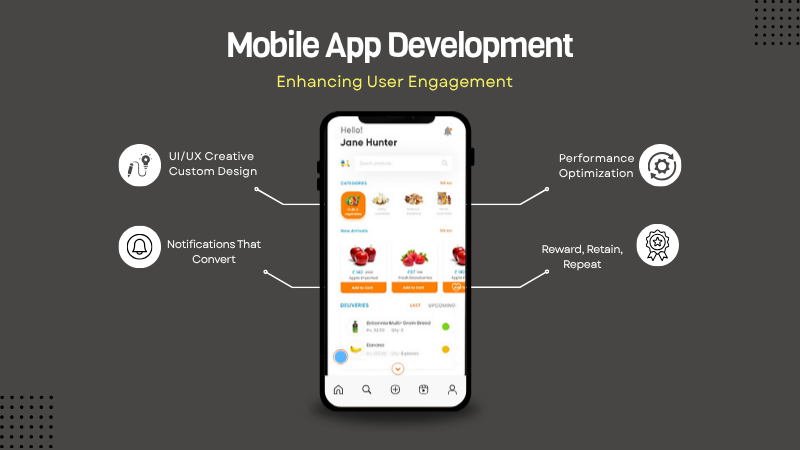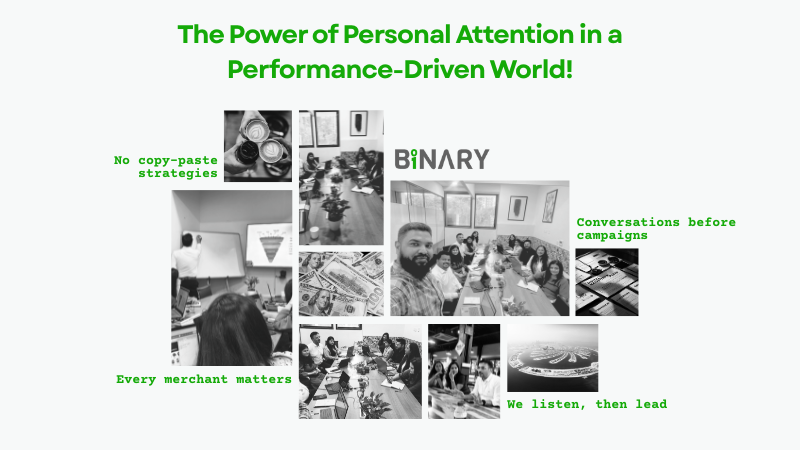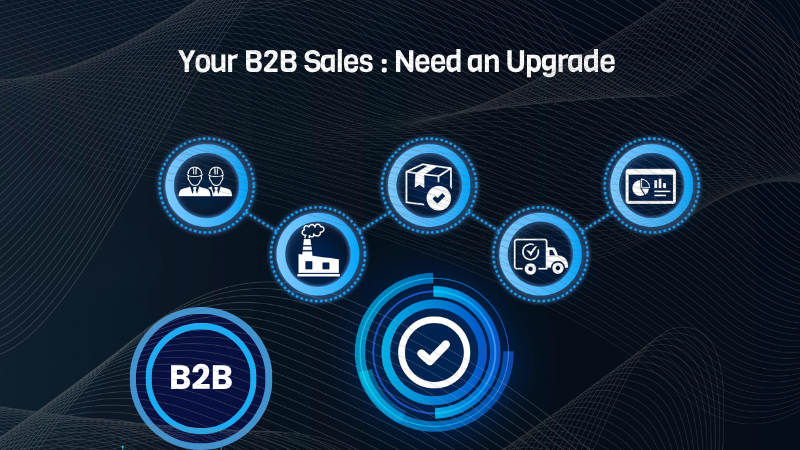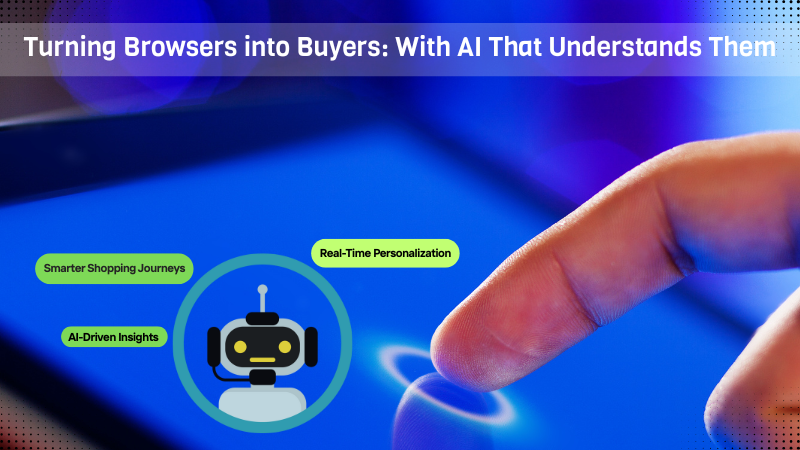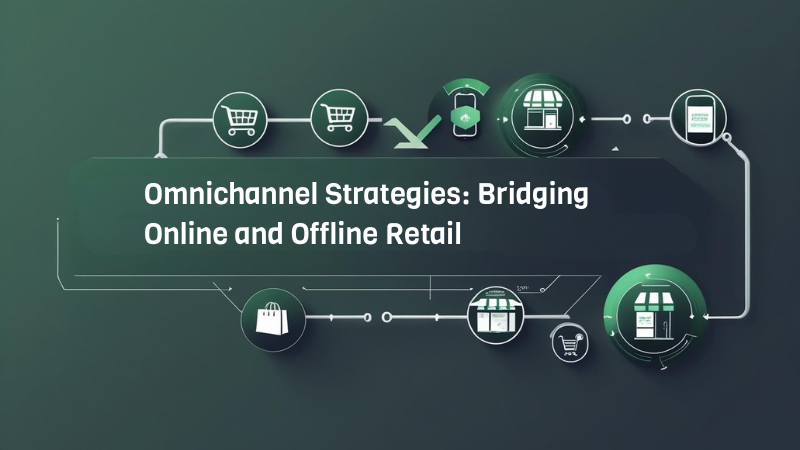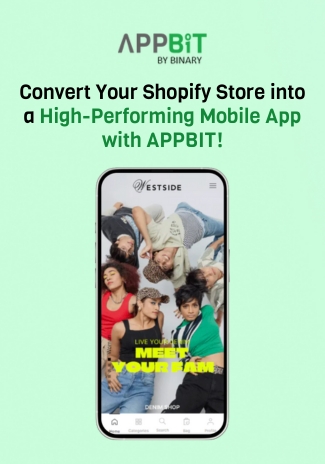In today’s digital-first world, the mobile phone has become more than just a communication device—it is a gateway to commerce, entertainment, and connection. For e-commerce businesses, the shift from web to mobile is not just a trend; it is a necessity. Mobile applications are now critical tools for enhancing user engagement, improving customer retention, and ultimately driving revenue.
Let us explore how mobile app development for e-commerce plays a transformative role in user engagement, focusing on three key pillars: user experience, push notifications, and loyalty programs.
1. The Growing Role of Mobile in E-Commerce
E-commerce has evolved rapidly over the last decade, and much of that growth is due to increased smartphone usage. According to Statista, over 72% of all e-commerce transactions are now carried out on mobile devices. This staggering statistic underlines a simple truth: your customers are already on mobile, and they expect a seamless experience.
A mobile app allows e-commerce brands to deliver a more curated, responsive, and personalised experience than a mobile website. Unlike a browser, an app offers direct access, faster loading speeds, and richer interactions, all of which lead to higher engagement and better conversion rates.
2. Optimised User Experience: The First Step to Loyalty
A major advantage of a dedicated mobile app is the ability to craft a user interface (UI) and user experience (UX) that aligns with customer behaviours. Unlike mobile websites—which must account for different screen sizes, browsers, and slow connections—mobile apps can be designed for efficiency and fluid navigation.
Key UX Elements That Boost Engagement:
- Personalisation: Apps can track user behaviour, preferences, and past purchases to recommend products and show relevant content.
- Speed & Performance: Apps load faster than websites, which means fewer drop-offs and better conversion.
- Seamless Navigation: With bottom navigation bars, one-click access to categories, and intuitive layouts, users can explore products without friction.
- Offline Access: Some functionalities, like saved wishlists or browsing cached product pages, can be available without internet, increasing stickiness.
A smooth and delightful user experience is often the difference between a user making a purchase and abandoning the app altogether.
3. Push Notifications: The Art of Staying Top of Mind
One of the most powerful engagement tools a mobile app offers is push notifications. Unlike emails or ads, push notifications are direct, real-time, and personal.
Why Push Notifications Work:
- Instant Reach: You can inform users about offers, cart reminders, or new arrivals in real time.
- Personal Relevance: Notifications can be tailored based on user behaviour (e.g., “Your favourite shoes are back in stock!”).
- Re-Engagement: Bring back inactive users with incentives or updates.
- Event-Driven: Announce flash sales, price drops, or restocks that create a sense of urgency.
However, the key to effective push notification strategies is balance. Overloading users with messages can lead to app uninstalls. Instead, e-commerce brands must personalise timing, frequency, and content to drive engagement without becoming intrusive.
4. Loyalty Programs: Turning Buyers Into Brand Advocates
Another major benefit of e-commerce mobile apps is the ability to create and manage customer loyalty programs seamlessly. Apps give businesses more control and flexibility in how they reward customer behaviour.
Loyalty Features That Keep Customers Engaged:
- Reward Points: Users earn points for purchases, reviews, referrals, or app usage, redeemable for discounts.
- Tiered Memberships: Encourage more purchases by unlocking premium benefits at higher spending tiers.
- In-App Challenges or Missions: Gamify the shopping experience with interactive goals (“Buy 3 times this month, get a free gift”).
- Birthday & Anniversary Offers: Personalised gestures that build emotional loyalty.
When users feel recognised and rewarded, they are more likely to return, engage, and even refer others. A well-integrated loyalty program builds long-term brand affinity.
5. Why a Mobile App Wins Over Mobile Web
Many e-commerce brands start with mobile-optimised websites, and while that’s a great beginning, it often falls short in delivering deep engagement.
Here’s how mobile apps outshine mobile websites:
| Feature | Mobile Website | Mobile App |
| Speed | Slower, browser-dependent | Faster, native performance |
| Personalisation | Limited by cookies | Deep, behaviour-based personalisation |
| Engagement | Passive browsing | Active interaction (push, loyalty, gestures) |
| Accessibility | URL dependent | Always-on icon on home screen |
| Offline Mode | No access | Limited access possible |
In short, apps create a self-contained environment where the brand has full control over the user journey, enabling better conversion, upsell, and retention opportunities.
6. Real-World Case Study: Fashion Brand X
A mid-sized fashion brand in India decided to launch a mobile app after observing high mobile traffic but low conversion rates on their mobile site. They integrated the app with push notifications, a loyalty points system, and real-time inventory updates.
Within the first 6 months:
- App downloads crossed 100K+
- Cart abandonment rate dropped by 24%
- Repeat purchases increased by 38%
- Loyalty program members had 2.5x higher LTV than regular customers
This case reinforces how mobile apps, when built strategically, can significantly impact business outcomes.
7. What to Keep in Mind Before Developing an E-Commerce App
If you are planning to invest in mobile app development, here are a few essentials:
- Platform Selection: Native (iOS/Android) vs cross-platform (Flutter/React Native), depending on budget and target audience.
- Backend Integration: Ensure seamless sync with your inventory, payment, and logistics systems.
- Data Privacy & Security: With payments and personal data involved, your app must comply with global data laws (GDPR, etc.).
- App Store Optimisation: Your app must be discoverable on the App Store and Play Store with the right metadata and visuals.
- Post-Launch Support: Regular updates, bug fixes, and performance improvements are crucial for retention.
Conclusion: Mobile Is the Future of E-Commerce
The modern shopper is mobile-first. They browse, compare, wishlist, buy, and review—all from the palm of their hand. E-commerce brands that invest in mobile app development are not just keeping up with trends—they are building future-ready digital infrastructure.
From rich user experiences and real-time engagement to loyalty-building features and improved performance, mobile apps can transform the way e-commerce brands connect with their audience.
If your brand is looking to scale and retain users in a crowded digital landscape, a well-designed mobile app is no longer a “nice-to-have”—it is a core part of your growth strategy.


